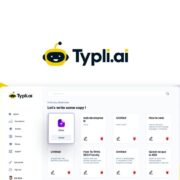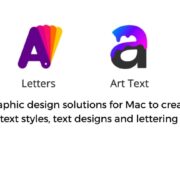
Project management for web design teams can be challenging. To borrow the words of Denis Waitley… Expect the best, plan for the worst, and prepare to be surprised.
You are working with creatives who want to express their ideas and you need high levels of collaboration to come up with the best web designs. It’s a delicate balancing act between managing different people and getting the output you desire.
The high-pressure environment can often lead to conflict. And the ever-changing client demands can add to the stress. You must find a way to manage routines for optimal output.
In our article, we will share with you some project management tips for web design teams. We have taken some of the best recommendations from established web design firms.
Project Management Tips for Optimal Output from Web Design Teams
If you do not have a management system in place, you will face difficulties. So, here are some of the things you need to do.
1. Document Everything the Team Needs To Know
Communicating is not as simple as expressing words and hoping the team gets it. It is essential to document every aspect of the web design project. It saves the group from continually asking you for information.
You also get greater clarity on what the client needs when you put it down on paper. Professional companies will often use project briefs.
The information becomes available to everyone on the team. It keeps people on the same page resulting in greater efficiency.
Critical components to capture in the briefs include:
- Background information
- Goals of the project
- Timelines
- Technical requirements
- Team members
- Any other information that may be pertinent to the completion of the project.
2. Work With a Plan
Having a plan will improve efficiency in the handling and completion of project tasks. You’ll need to break the project into small milestones that can be measured as you go along; allowing for easier delegation of responsibilities.
3. Have Clear Goals and Responsibilities
Your team needs to understand the goals of the project. Ideally, your client will share this information with you. While the goals and project objectives are defined by the client, it’s important that your team has its own set of goals as well.
Clarity of objectives is essential for excellence in team performance. Brainstorming sessions create a feeling of cohesiveness. Set time aside for team members to give their input on the project.
Another critical component of project management is assigning responsibilities. Start by knowing the strengths of your team members. Also, take the time to see how they work together.
Collaboration is a critical component of teamwork. Yet, within a team are different personalities and work styles. Knowing your team well will help in task allocation. Every team member must understand their role.
Avoid overlapping responsibilities among team members. When people know exactly what is expected of them, potential conflict is minimized.
4. Streamline Your Communication
If you are on the lookout for tools that can maximize efficiency with less hassle, then Google has got you covered. Google suite for nonprofits is here to save the day, or days in this case. The vast assortment of tools available here can keep your organization ticking with seamless communication within your team
Gmail, the most famous email app, helps us send meaningful messages and attachments with one another. There are a number of useful options packed within the gmail app that makes sending emails a breeze.
Google calendar is another tool that helps us keep track of your day and goes a long way in helping you stay organised. You can schedule meetings which also improves overall communication with your team and getting things done.
Other platforms like Trello, Basecamp, or Asana make communication so much easier. You get to track progress without having to ask for updates from the team members. Team members also have access to the boards. You keep everyone in the know without having to follow them around.
You should also consider having status meetings. It allows the team to express whatever challenges they may be currently facing. Keep the sessions short so that you do not interfere with their workflow.
5. Have Schedules and Timelines and Stick to Them
Schedules are critical in web design. They give you clear steps to follow when working on a project. You may think that it’s time-consuming to come up with a proper schedule, but in the long run, you’ll realize its benefits.
Your schedule should highlight the deliverables and timelines. Sticking to timelines is essential for any project. Clients will give you repeat business if you deliver on time and exceed their expectations. When outlining your goals, it is crucial to allocate a timeline to each part of the project. Your team members should be accountable for their deliverables.
With Ora, you can show the entire team which tasks you’re working on—as well as when you estimate task completion. All times are recorded and can be used for further reference.
6. Allow For a Level of Pessimism
As Denis Waitley’s quote suggested, you must plan for the worst and always prepare to be surprised. Sometimes, things just go wrong, no matter how hard you try to cover every base. Mentally preparing for the worst can save you if the worst happens.
Look at all the possible scenarios that can go wrong. Then put in place measures to correct them. Think of it as having a crisis plan for your web design projects. One thing that often goes wrong is an inability to meet the client’s timelines. In this case, your crisis plan might include asking your team to work longer hours.
Communicate this information to everyone who is involved in the project. Get their feedback because if the worst happens, they will be actively involved in correcting it.
7. Avoid Rigidity
The best-laid plans must allow for a level of flexibility. It’s best if you give yourself space to adjust or tweak whatever is not working. It’s not uncommon for clients to change their minds about certain aspects midway through the project. Flexibility will allow you to listen to what they have to say and incorporate it into the design.
Why Ora is the Perfect Solution ?
Ora simplifies project management with a broad range of functionalities. Create lists using the tasks or cards. Increase team agility with the Kanban board. Track progress and update the teams using the card details features. Centralize all your activities, whether you are scheduling or planning, with the easy-to-use features. Project management becomes a breeze with the right tools.
Final Conclusion
Project management for web design teams can be challenging, but with the right planning, web design work becomes so much easier. We have shared with you seven tips that you can use to streamline and foster team collaboration.
Remember, you must keep your team informed, with the lines of communication open and free-flowing. Take advantage of project management software to align your processes. Assign responsibilities and let each member understand the impact of their role. When they take ownership of the project, you can be sure of success.



